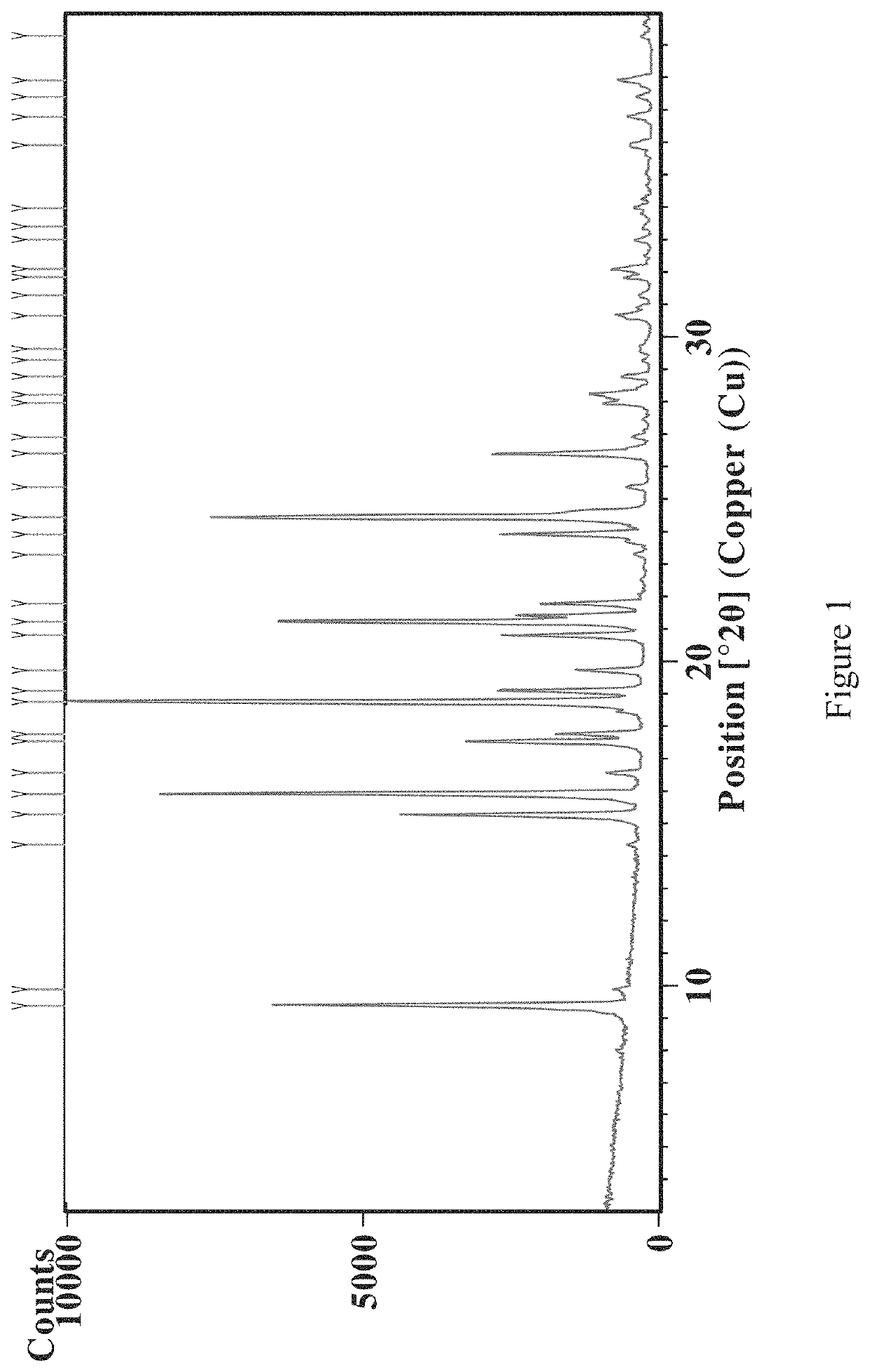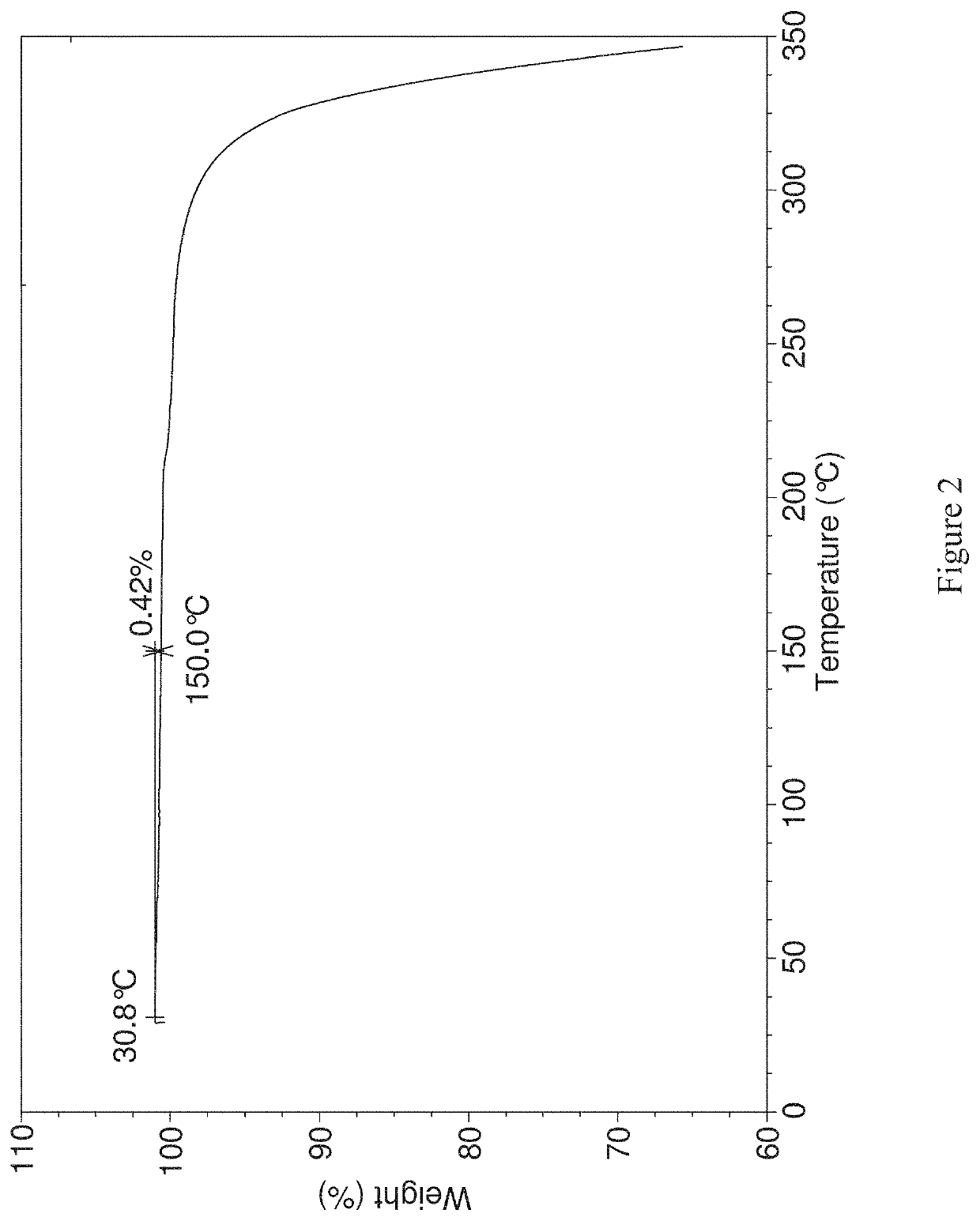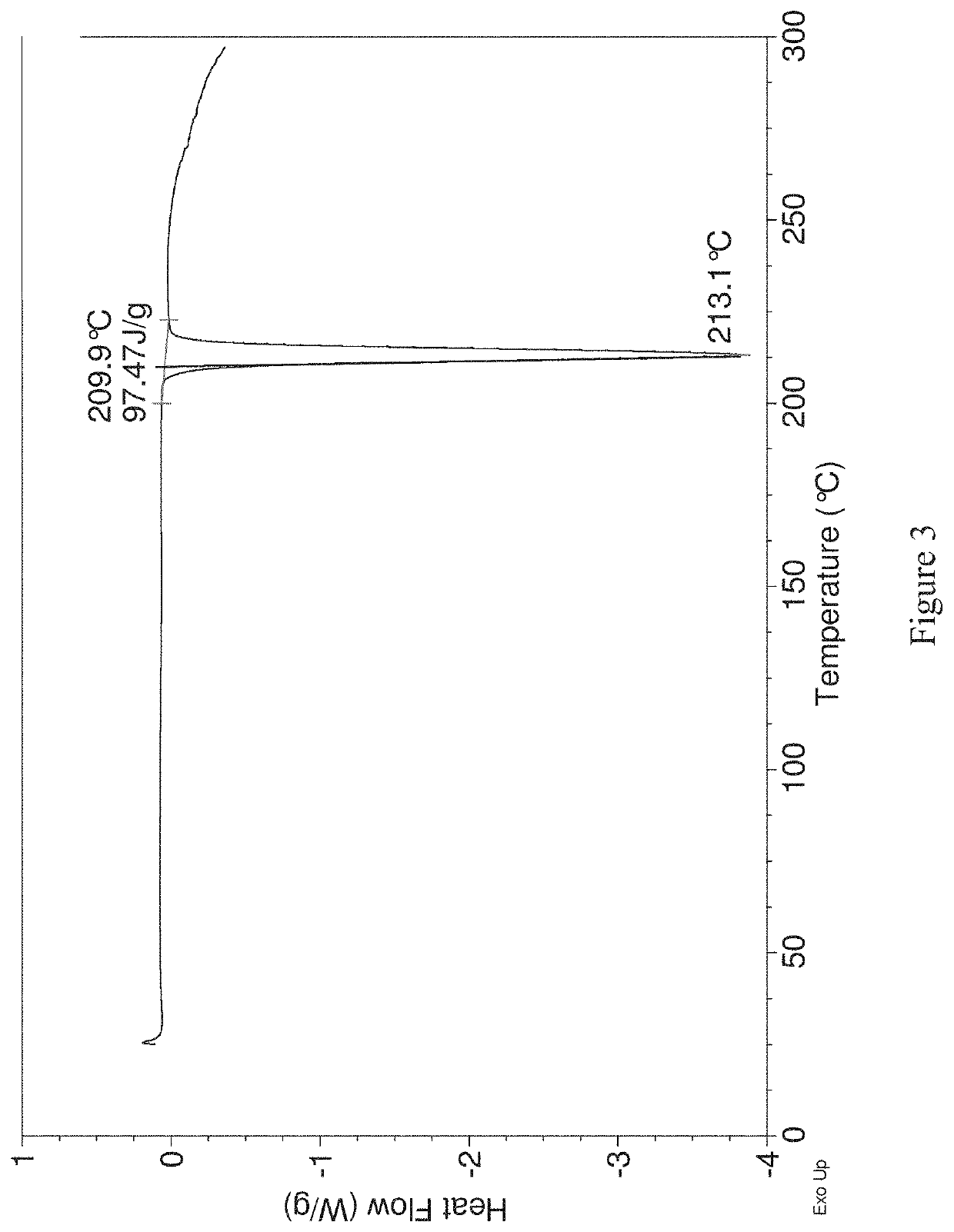Polymorphic forms of metopimazine
- Summary
- Abstract
- Description
- Claims
- Application Information
AI Technical Summary
Benefits of technology
Problems solved by technology
Method used
Image
Examples
example 1
of Metopimazine Mesylate Crystal Form A
[0201]One of skill in the art will recognize that the following synthetic reactions and schemes may be modified by choice of suitable conditions and reagents in order to access metopimazine mesylate, 1-(3-(2-(methylsulfonyl)-10H-phenothiazin-10-yl)propyl)piperidine-4-carboxamide methanesulfonic acid, from metopimazine, 1-(3-(2-(methylsulfonyl)-10H-phenothiazin-10-yl)propyl)piperidine-4-carboxamide. Metopimazine, and methods of making metopimazine, are described in DE1092476, hereby incorporated by reference. Metopimazine can be obtained from a variety of commercial sources (CAS registry number 001400844-7). By way of example only, metopimazine can be obtained from ABI Chemicals (# AC2A0SHFH), AKos (# AKOS005065914), Biochempartner (# BCP9000716) Molport (# MolPort-003-808-703), Santa Cruz Biotechnology (# sc-211901), and Tractus Company Limited (# TX-013443).
[0202]
[0203]To metopimazine (50 g) was added dimethyl sulfoxide (DMSO) (150 mL) followe...
example 2
of Metopimazine Mesylate Crystal Form B
[0216]
[0217]A glass beaker containing a thin layer of metopimazine mesylate Crystal Form A (10 g) was allowed to sit at room temperature and 100% relative humidity for approximately 3-5 days to provide metopimazine mesylate Crystal Form B as an off-white solid. The structure of metopimazine mesylate Crystal Form B was confirmed by 1H NMR (Table 9).
[0218]
TABLE 91H NMR of Metopimazine Mesylate CrystalForm B; 400 MHz 1HNMR; DMSO-d6Chemical ShiftCoupling(ppm)IntegrationMultiplicityConstant (J, Hz)8.961Hs—6.91-7.529Hm—4.062Ht 6.73.462Hd11.43.243Hs—3.152Hm—2.892Hdd10.6, 22.92.334Hm—2.092Hm—1.892Hm—1.692Hdd14.6, 27.4
[0219]For XRPD analysis, PANalytical X-ray powder diffract meters were used. Sample was prepared by putting a layer of sample (approx. 5 mg) on the center of a silicon wafer. The XRPD parameters used are listed in Table 6 above. The XRPD pattern is provide in FIG. 4, and the peaks provided in Table 2 above.
[0220]TGA data were collected usi...
example 3
inetic Analysis of Metopimazine Mesylate Crystal Form A
[0221]A clinical comparative pharmacokinetic study was performed to understand the pharmacokinetic profile of metopimazine mesylate Crystal Form A in comparison to the free base of metopimazine. This study was as a 3-period, cross-over design with 3 administrations of single doses: oral formulation of metopimazine mesylate Crystal Form A fasting, oral formulation of metopimazine mesylate Crystal Form A after a high-fat breakfast, and oral formulation of metopimazine free base fasting, with a wash-out period of 48 hours between each administration. Fifteen subjects were enrolled and received each of the 3 treatment. Plasma samples from each subject were analyzed for various pharmacokinetic parameters. Mixed model repeated measures (MMRM) analysis was performed on each sample. The comparison of metopimazine mesylate Form A and metopimazine free base showed that Tmax values for metopimazine mesylate Form A had a statistically signi...
PUM
| Property | Measurement | Unit |
|---|---|---|
| Temperature | aaaaa | aaaaa |
| Temperature | aaaaa | aaaaa |
| Temperature | aaaaa | aaaaa |
Abstract
Description
Claims
Application Information
 Login to View More
Login to View More - R&D
- Intellectual Property
- Life Sciences
- Materials
- Tech Scout
- Unparalleled Data Quality
- Higher Quality Content
- 60% Fewer Hallucinations
Browse by: Latest US Patents, China's latest patents, Technical Efficacy Thesaurus, Application Domain, Technology Topic, Popular Technical Reports.
© 2025 PatSnap. All rights reserved.Legal|Privacy policy|Modern Slavery Act Transparency Statement|Sitemap|About US| Contact US: help@patsnap.com



